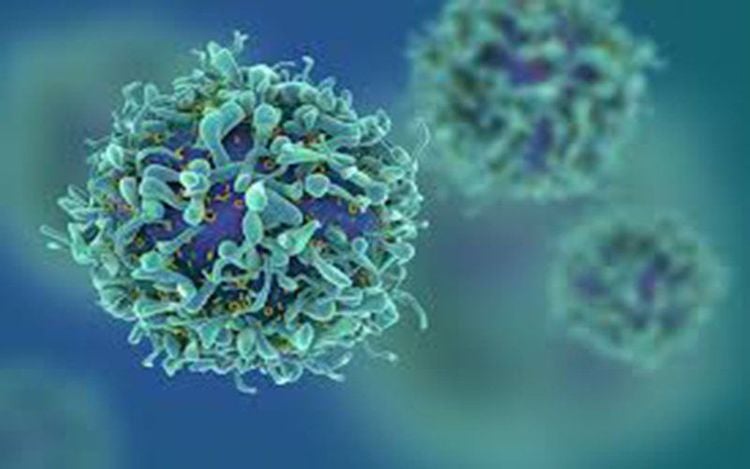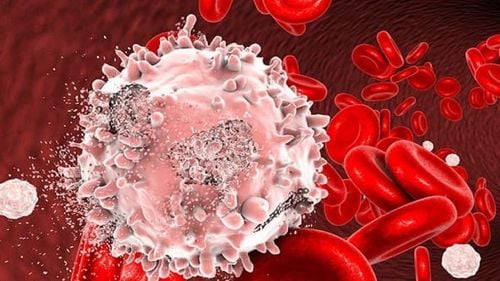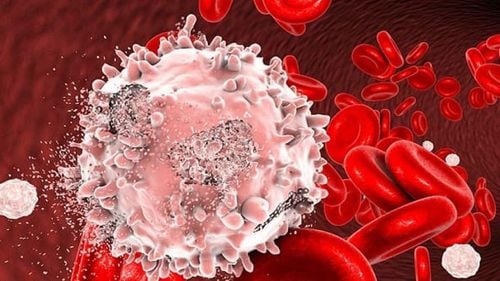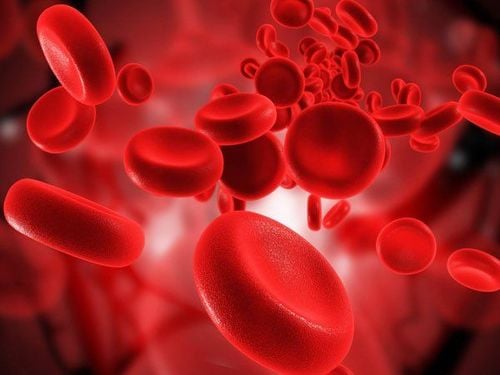This is an automatically translated article.
X-linked lymphoproliferative syndrome is an X-linked disorder that occurs only in males. This is a dangerous syndrome with a high mortality rate with complications such as liver failure, immunodeficiency, lymphoma or bone marrow aplasia.1. What are lymphocytes?
Lymphocytes are one of the main white blood cells of the immune system, produced in four places in the body including the lymph nodes, the spleen, the thymus gland under the breastbone, and the bone marrow located in the large bones and plane.There are two main types of lymphocytes including T cells and B lymphocytes and both originate from stem cells in the bone marrow. There is also another type of lymphocytes called NK lymphocytes that respond quickly to foreign substances entering the body and fight cancer cells.
Lymphocyte concentration in the human body is not the same, they can vary by race, gender, area of residence or even lifestyle habits. However, this concentration will range from 1000-4800 cells/ 1 μL of blood for adults and from 3000-9500 cells/ 1 μL of blood for children.

Lympho là một trong những tế bào bạch cầu chính của hệ miễn dịch
2. What is X-linked lymphoproliferative syndrome?
X-linked lymphoproliferative syndrome (XLP) is an immunodeficiency disorder associated with a lack of immune cells caused by mutations in the X chromosome gene that occurs only in males.Lymphoid hyperplasia syndrome is divided into 2 types including:
XLP type 1: The prevalence is up to 60%, the disease is caused by mutations in the gene encoding a protein molecule that activates lymphocytes causing them to increase uncontrolled birth.
XLP type 2 have the same clinical manifestations as type 1 but they have a tendency to hemophagocytosis causing immunodeficiency in infants and young children. XLP type 2 is caused by mutations occurring in the gene that encodes the repressor of the X-linked apoptosis protein.
Symptoms of X-linked lymphoproliferative syndrome are often subtle, only when the patient is infected. EBV virus and develop mononucleosis or liver failure with newly discovered disease.
3. Diagnosis of autoimmune lymphoproliferative syndrome
To diagnose autoimmune lymphoproliferative syndrome, the doctor will order the patient to perform genetic testing, the diagnosis is based on gender, EBV virus infection status, blood phagocytosis, and family history.Genetic testing is considered the gold standard to confirm the diagnosis of patients with autoimmune lymphoproliferative syndrome. However, the time to get results is often too long, so sometimes doctors will rely on other tests such as flow cytometry if there is a situation that requires early diagnosis results.
Some of the following findings will help suggest this syndrome:
Decreased antibody response to antigens (especially to EBV antigens) Proliferative T-cell response to impaired mitogens NK cell function CD4:CD8 ratio reversed

Để chẩn đoán hội chứng tăng sản lympho tự miễn, bác sĩ sẽ chỉ định bệnh nhân thực hiện xét nghiệm di truyền
4. Treatment of autoimmune lymphoproliferative syndrome
Autoimmune lymphoproliferative syndrome is a serious disease with 75% of patients dying by the age of 10 and nearly all of them dying by the age of 40. The only cure for lymphoproliferative syndrome autoimmune is a hematopoietic stem cell transplant with about 80% of patients surviving a successful transplant.To limit the occurrence of lymphoid hyperplasia, you can prevent the risk of EBV infection by maintaining good personal hygiene, avoiding contact, sharing items with sick people caused by the virus...
If If you have a need for consultation and examination at Vinmec Hospitals under the national health system, please book an appointment on the website for service.
Please dial HOTLINE for more information or register for an appointment HERE. Download MyVinmec app to make appointments faster and to manage your bookings easily.













